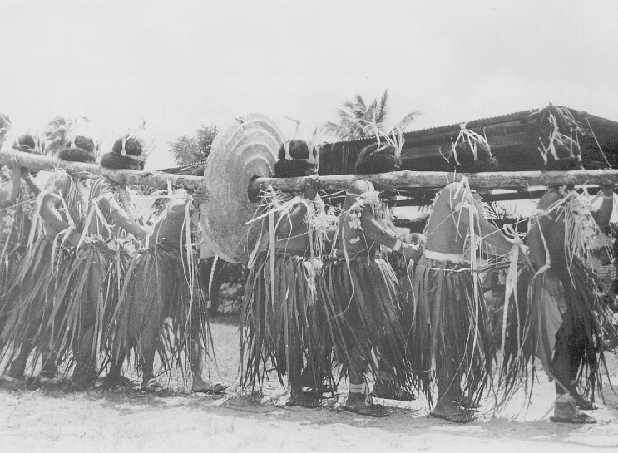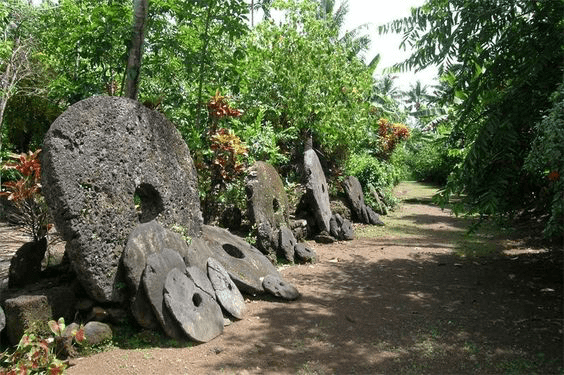The Tale of Stone Money (And Its Resemblance to Bitcoin)
Ayelen Osorio
Community + Content Marketing
Did you know the essence of Bitcoin existed centuries ago? The Rai stone (or stone money) of the Yap island (now known as the Federated States of Micronesia) was a form of stone money from centuries ago that most resembles Bitcoin. The success of these stones as a form of money lasted for centuries because the Yapese understood a basic economic concept most of us don’t: when money becomes easy to produce it loses value and eventually its role as money (a very timely topic if I may add).
Why Rai Stones Were Desirable
Being circular stone disks with a hole in the middle, they were carved out of limestone and often varied in size from 3.4 cm to 4 meters in diameter, weighing thousands of pounds. Yap island didn’t have the necessary limestone for the Rai stone which made it more desirable. But nearby Palau island had an abundance of limestone.
The Yapese would travel to Palau and quarry the stones back to Yap via canoes and rafts. Some of these stones were so heavy it needed hundreds of people to quarry them. Once they arrived in Yap, the stones were placed in a location where everybody on the island could see them. And although their size and weight made it difficult to casually transport them around the island a person could make payments with a stone or a fraction of a stone by word-of-mouth.
Fun fact: Sometimes stones fell into the bottom of the ocean when they were on their way to Yap island. The Yapese still counted these sunken stones as currency, using them to trade by word-of-mouth.

The Success of Stone Money
The colossal effort and cost required to get new stones meant an important thing: the supply of stones on the island was always going to be larger than whatever new supply could come in at any given period of time. It was not easy to suddenly inflate the supply of Rai stones, which means that the stones had a “high stock-to-flow ratio.”
A higher stock-to-flow ratio means there is less supply entering the market than already exists in the market. Assets with a higher stock-to-flow ratio are gold and Bitcoin because you can’t just produce more gold or Bitcoin (or Rai stones). They are limited, difficult to produce or mine, and as a result they retain value in the long-term.
On the other hand, government money has a low stock-to-flow ratio. The supply coming into the market can be indefinite and surpass the amount that already exists in the market. This year the U.S. Federal Reserve announced its willingness to print unlimited money raising concerns because in doing this the money in the economy loses value. Over time its population has to spend more of their hard-earned money to buy the same amount of goods.

The Stone Money System Used an Oral Ledger
If an owner needed to make a payment or if ownership of a stone needed to be transferred, the owner would announce to all the islanders that the stone’s ownership belongs to somebody else. The whole town would recognize the new owner of the stone, and the recipient could use the stone as payment moving forward. By maintaining oral ledgers of the stone owners and passing it down generations (through stories), it helped the islanders record and communicate changes in ownership. This made it impossible for people to steal a stone. For centuries (some argue a millennia), this monetary system worked incredibly well for the Yapese.
The Collapse of the Rai Stone As Money
In 1871, an Irish-American captain named David O’Keefe was shipwrecked and revived by the Yapese. O’Keefe eventually wanted to take Yap’s coconuts and sell them to producers of coconut oil. But he found it hard to conduct business with the islanders who had no interest in receiving foreign forms of payment. He sailed to Hong Kong to build a large boat and produced explosives that would help him quarry large Rai stones back to Yap.
But the Yapese would not receive his stones as payment. The chief banned the islanders from using his stones because they were collected too easily. The stones that were accepted were ones that were quarried traditionally, with the sweat and blood of the Yapese. Some islanders sided with the chief’s decision, while others disagreed, supplying O’Keefe with coconuts. Eventually, division and conflict ensued, and so did the demise of the Rai stones as money.

Rai Stones and Bitcoin
Bitcoin is a digital currency and it’s transactions are recorded on a public ledger called the blockchain, which acts like a bookkeeping system that records Bitcoin ownership and transactions similar to the oral ledger that the Yapese maintained. Both forms of currency, Rai stones and Bitcoin, are limited, depend on a public, community ledger system that is transparent about transactions and it does so without a centralised bank. With both currencies, the people are their own banks. And they are empowered to maintain the economy.
“As with the rai stones, information about bitcoins’ value and ownership is managed collectively…It’s a distributed financial system as opposed to the more familiar, centralised systems involving third-party financial institutions.” Scott McKeon, co-author of Banking on Stone Money: Ancient Antecedents to Bitcoin
What We Can Take Away
The tale of the Rai stones shows us a valuable lesson not commonly taught in schools: when more money enters the market than already exists, it lowers the stock-to-flow ratio. This means the money’s value is reduced so far down it impoverishes its people because they have to spend more of their hard-earned money to pay for the same amount of goods (meanwhile governments and bank officials profit off of this). Because Bitcoin’s supply is limited to 21 million coins, it is not owned by a centralized power and has a transparent, secure, reliable ledger, it’s the next step to rebuilding a money system that for too long has been setup to be broken and working against the people.
Looking to get started with bitcoin? Netcoins makes it easy for people to buy and sell cryptocurrencies like bitcoin.
Written by: Ayelen Osorio
Writer, community + content marketing at Netcoins. Life's biggest enthusiast. Learn crypto with me.